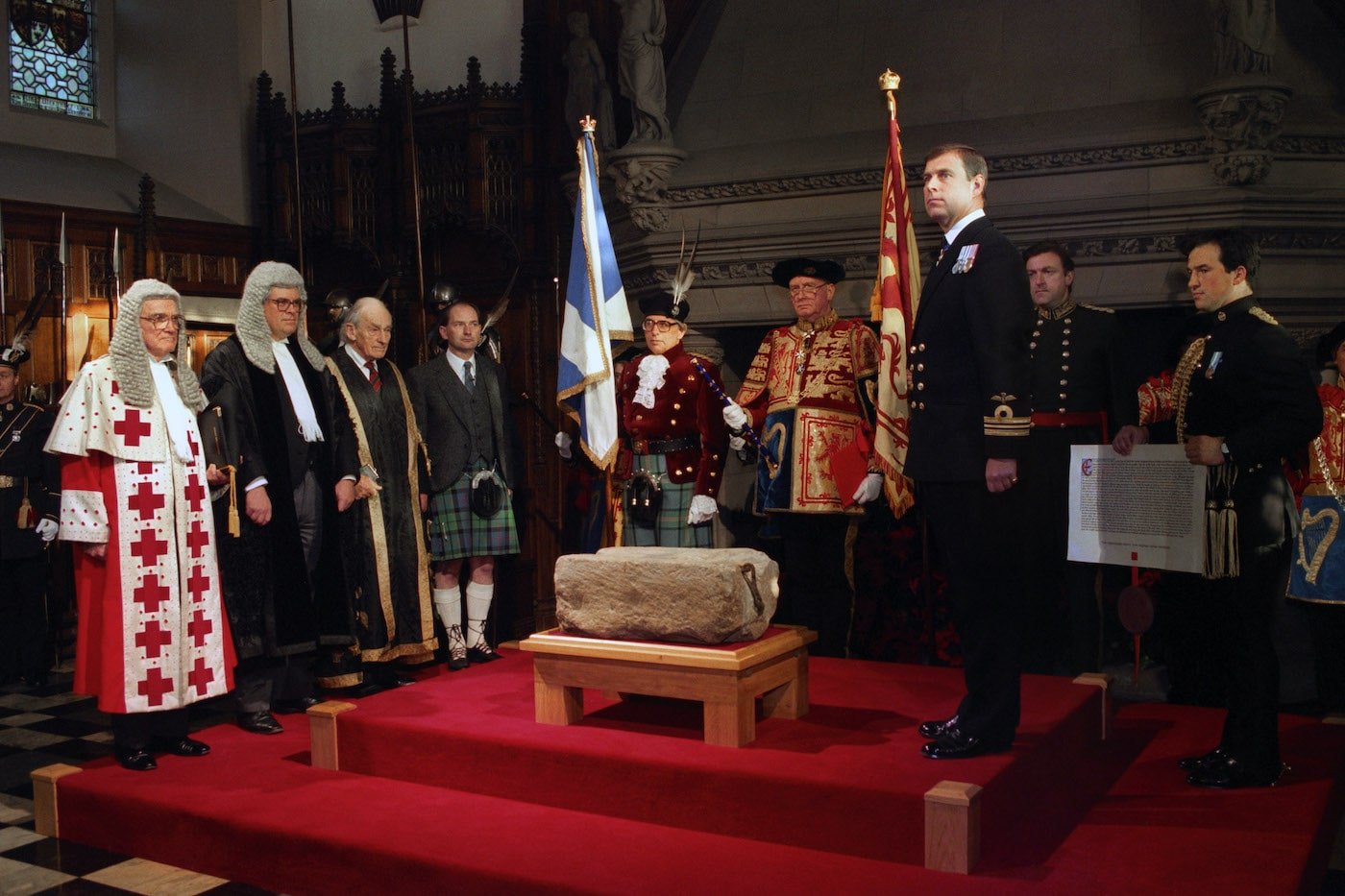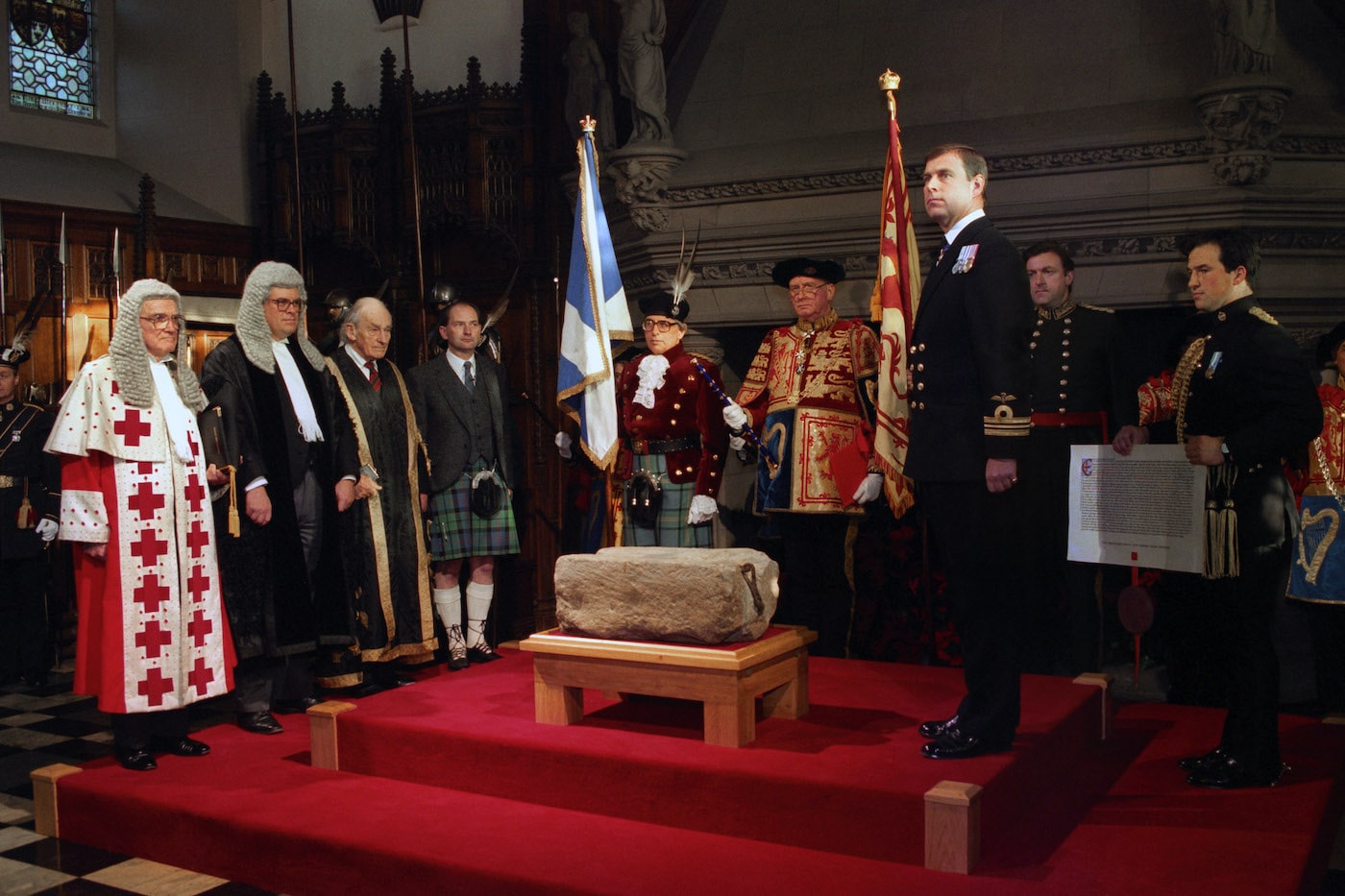
‘Stone of Destiny’ Plays Historic Role in King Charles III Coronation, Royal Expert Shares
Many historic elements involved in the coronation of King Charles III sound almost magical – like the Stone of Destiny.
Royal commentator and British journalist Jonathan Sacerdoti shared the history of the Stone of Destiny. And the important role it will play in King Charles III’s coronation.
The coronation ceremony of British monarchs is a “highly symbolic event, steeped in history, ritual, and tradition, with many elements that have been carried out for centuries.”
“The ceremony has evolved over the centuries,” he told Showbiz Cheat Sheet. “And while King Charles III is making some changes to the proceedings, many key elements remain unchanged, providing a link to the past and a sense of continuity for the British monarchy.”
Stone of Destiny has British and Scottish roots
The Stone of Destiny is symbolic in both British and Scottish history. “The Stone of Destiny, also known as the Stone of Scone, is a highly significant symbol of Scottish and British history. It is an ancient block of sandstone that has played a central role in the coronation ceremonies of British monarchs for centuries,” Sacerdoti shared.

“During the coronation ceremony, the Stone of Destiny is placed beneath the throne on which the monarch is seated,” he said. “The monarch sits on the throne and takes an oath to uphold the laws and customs of the realm while touching the stone with his or her hand. This act symbolizes the monarch’s acceptance of the divine right to rule, and their commitment to govern justly and wisely.”
What is the history of the Stone of Destiny?
The Stone of Destiny is so historic, it dates back to the 9th century. “According to legend, it was brought to Scotland from Ireland by the prophet Jeremiah. And was used as a pillow by the biblical figure Jacob,” Sacerdoti said. “In reality, the stone is thought to have been quarried in Scotland. And may have been used in the inauguration ceremonies of Scottish kings.”
“In 1296, the Stone of Destiny was captured by King Edward I of England and taken to Westminster Abbey in London,” he said. “From that point on, it became a symbol of English and British royal power. And it was used in the coronation ceremonies of English and British monarchs. The stone was kept at Westminster Abbey until 1996, when it was returned to Scotland and is now kept at Edinburgh Castle.”
How will the Stone of Destiny be used for King Charles III’s coronation?
The importance of the Stone of Destiny in the coronation ceremony lies in its symbolic significance. “According to tradition, the stone represents the biblical story of Jacob’s dream, in which he saw a ladder stretching up to heaven,” he said. “In the dream, God spoke to Jacob and promised to give him and his descendants the land on which he was sleeping. The stone is said to represent the rock upon which Jacob rested his head. And thus symbolizes the divine right of monarchs to rule over their lands.”
Sacerdoti revealed that the Stone of Destiny was not always present at every coronation ceremony. “In 1950, a group of Scottish nationalists stole the stone from Westminster Abbey and took it back to Scotland. It was returned to England a few months later. But some damage had been done to the stone during its removal. In 1996, the British government agreed to return the stone to Scotland permanently, as part of a devolution agreement.”
“Today, the Stone of Destiny is a powerful symbol of Scottish and British history,” he said. “And it continues to play an important role in the coronation ceremonies of British monarchs. Its story is a fascinating reminder of the ancient traditions and symbolism that underpin the British monarchy.”



